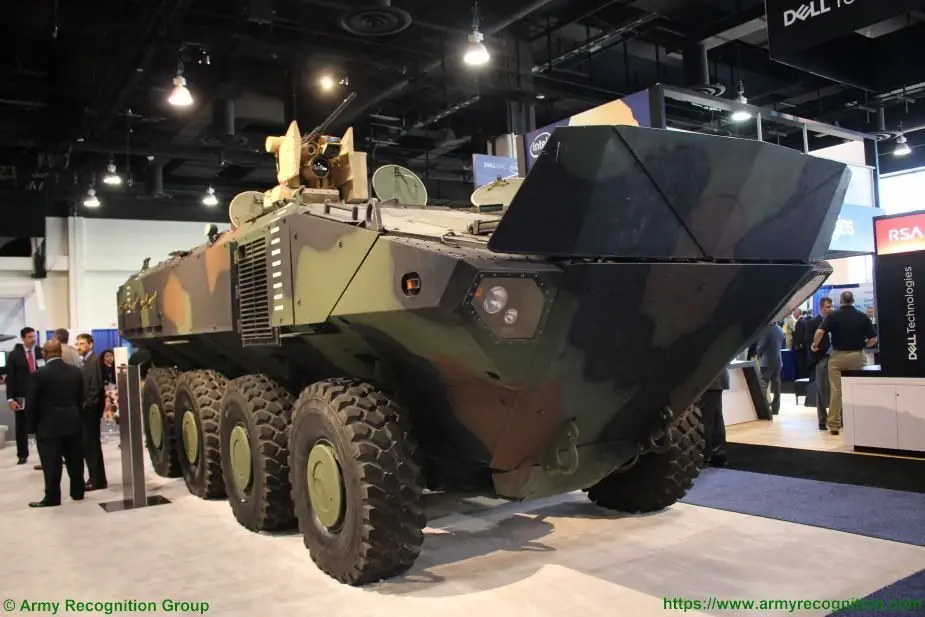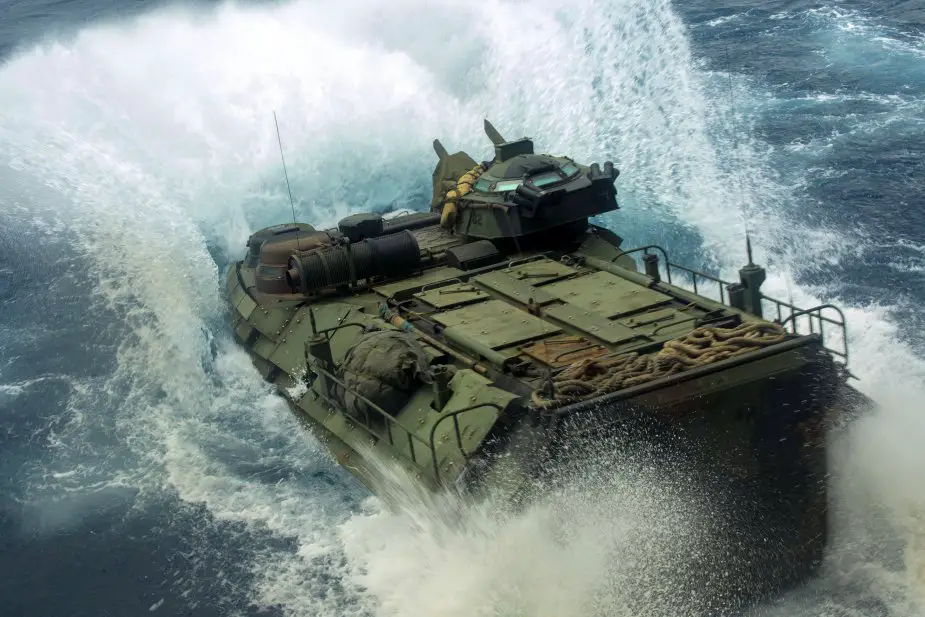New Amphibious Combat Vehicles and new tactics for the USMC
The USMC is getting two new types of Amphibious Combat Vehicles ( a wheeled one, and a tracked one), and a strategy is in development to use them, as David Axe explains on The National Interest.

BAE Systems ACV 1.1, the wheeled version of the new Amphibious Combat Vehicle of the USMC (Picture source: Army Recognition)
Since 1972, while the Vietnam war was still raging three years before its dramatic end, the Marines have been using the same amphibious tractor, or amtrac, David Axe recalls. The 29-ton AAV7 can carry up to 24 crew people (including crew) from an amphibious assault ship to an enemy beach over a distance of up to 20 miles. But this vehicle is lightly armored. Hence, in the 1990s, the Marine Corps began developing a replacement vehicle but canceled it in 2012 for cost and performance reasons.

The old AAV-7P will be replaced by the ACV 1.2, the tracked variant of the new ACV (Picture source: US DoD)
However, the new Amphibious Combat Vehicle (ACV) designed by BAE Systems could, at last, allow the Marines to retire its AAV7s. A $140.4 million contract has been signed with BAE Systems Platforms & Services segment in Sterling Heights, Michigan. Expected delivery of the first vehicles is fall 2019 and the 1st Marine Expeditionary Force’s 3rd Assault Amphibian Battalion out of Camp Pendleton, Calif., is expected to be the first to get them the following year. The Congressional Research Service, on March 15, 2019, updated its ongoing report on the ACV program. The ACV comes in two variants: the ACV Increment 1.1 is an 8x8 armored vehicle with limited swimming ability: it requires a landing craft to put it ashore. The ACV Increment 1.2 is a tracked vehicle and can swim from an assault ship to shore. Both ACV models boast tougher armor and better weapons than the AAV7 possesses.
The vehicle must be able to operate on land with M1A1 Abrams in mechanized task forces across the Marine Corps' mission profile. The vehicle shall provide protection for the occupants from the blasts, fragments and incapacitating effects of attack from kinetic threats, indirect fire and improvised explosive devices and mines. The vehicle shall be capable of firing existing Marine anti-structure and anti-armor missiles and should be able to accommodate existing command-and-control systems.
ACV 1.2 must be able to self-deploy from amphibious shipping and deliver a reinforced Marine infantry squad (17 marines) from a launch distance at or beyond 12 miles with a speed of not less than 8 knots in seas with one-foot significant wave height and must be able to operate in seas up to three-foot significant wave height. The vehicle must be able to maneuver with the mechanized task force for sustained operations ashore in all types of terrain. The vehicle’s road and cross-country speed, as well as its range, should be greater than or equal to the M1A1 Abrams’ ones. The vehicle’s protection characteristics should be able to protect against direct and indirect fire and mines and improvised explosive device threats. The vehicle should be able to accommodate command-and-control systems that permit it to operate both at sea and on land. The vehicle, at a minimum, should have a stabilized machine gun in order to engage enemy infantry and light vehicles.
The ACV arrives as the Marines and Navy are developing concepts for fighting a high-tech enemy. The key for the Marines is the Expeditionary Advance Base Operations concept. Until now, amphibious groups sail toward an enemy shore under the protection of carrier battle groups and offloaded large, concentrated forces of amphibious vehicles. Under the EAB concept, Marine forces would spread out in order to be harder to target, and will come ashore with more of their own offensive and defensive missiles so that they can protect themselves and contribute meaningful firepower to the overall U.S. force as that force comes together to attack. The new ACVs will play a key role in the concept.


























